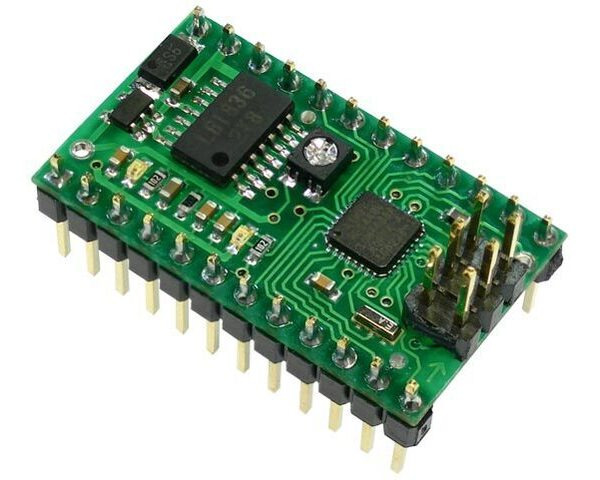Baby Orangutan robot controller mega48
The Baby Orangutan is Pololu’s smallest robot controller: it packs an AVR microcontroller and two motor drivers into a tiny 24-pin DIP package, making it perfect for everything from micro sumos to auxiliary control on larger robots. This version includes Atmel’s mega48 microcontroller with 4 KB of program memory and 512 bytes of RAM.
| Description | Specs (2) | Pictures (3) | Resources (11) | FAQs (0) | On the blog (0) | Distributors (0) |
|---|
File downloads
-
Baby Orangutan quick start-sheet and schematic (241k pdf)
-
LB1836M motor driver datasheet (94k pdf)
-
Sample AVR Studio 4 project for the ATmega48 to blink an LED (9k zip)
This is a sample AVR Studio 4 project that will blink an LED on a Baby Orangutan B-48.
-
Sample AVR Studio 4 project for the ATmega168 to blink an LED (9k zip)
This is a sample AVR Studio 4 project that will blink an LED on an Orangutan with an ATmega168 microcontroller: Orangutan mega168, Orangutan LV-168, Orangutan SV-168, Baby Orangutan mega168, and Baby Orangutan B-168.
Recommended links
-
WinAVR
A free, open-source suite of development tools for the AVR family of microcontrollers, including the GNU GCC compiler for C/C++.
-
AVR Studio 4
The older version of Atmel’s free integrated development environment (IDE) for AVRs, which is no longer supported by Atmel.
-
ATmega48 documentation
Microchip’s product page for the ATmega48.
-
Pololu Robotics Forum
Pololu Robotics and Electronics forum — get technical support, share your project, or just drop in to say hi.
-
Orangutan-lib
An open-source C library for the Orangutan family of robot controllers. Note: this library was not created by and is not maintained by Pololu; it contains only limited support for the Orangutan X2 and does not directly support the Orangutan SV-168, Orangutan LV-168, or Baby Orangutan B revision.
-
AVR Freaks
AVR community with forums, projects, and AVR news.
-
Tutorial: AVR Programming on the Mac
Customer Michael Shimniok has written a guide to programming AVRs (the Orangutan LV-168, specifically) using the Mac.











